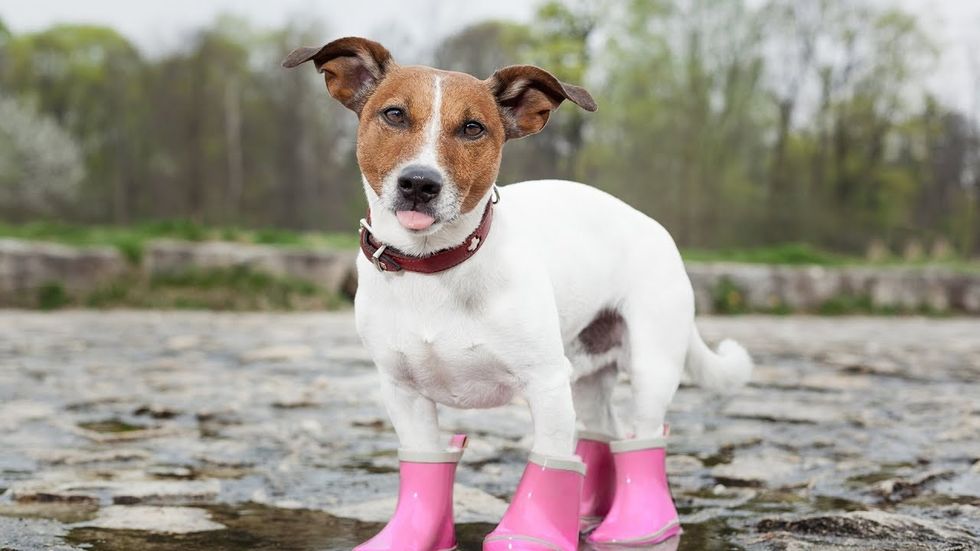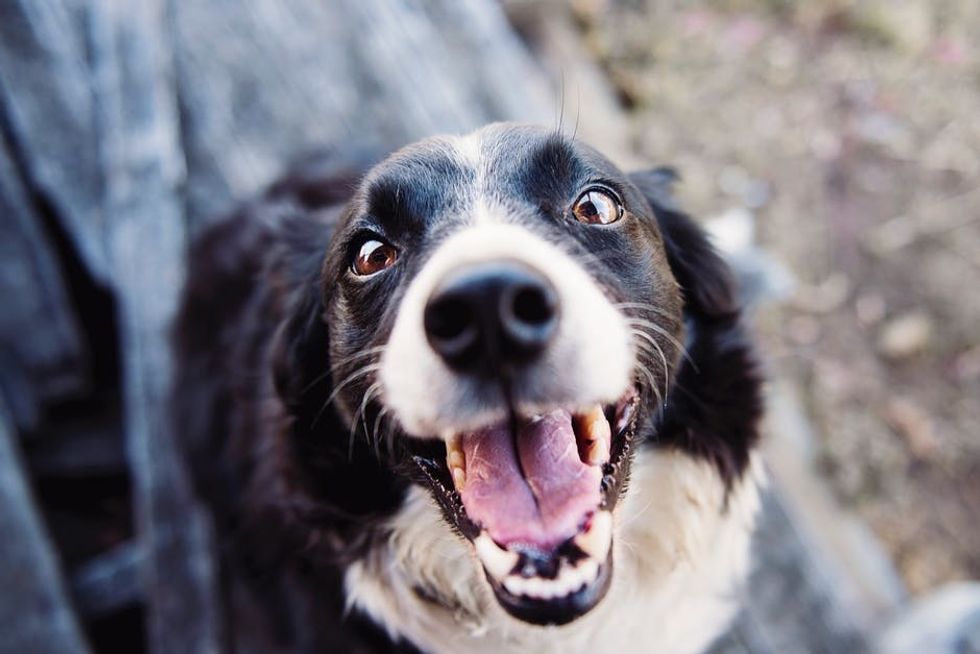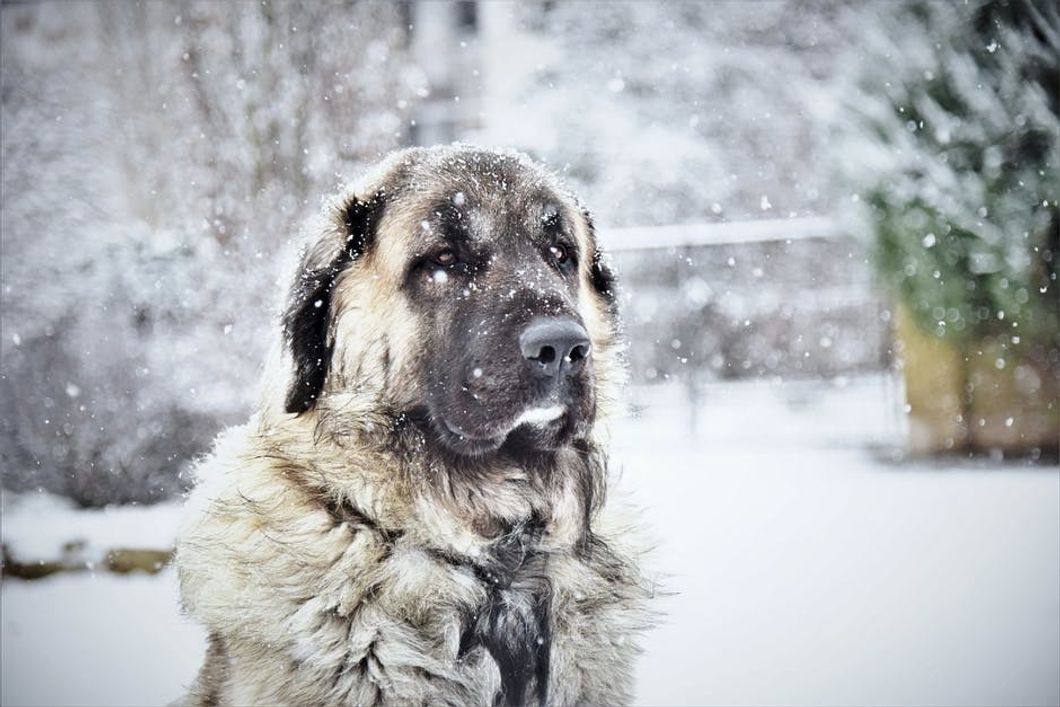With winter in full swing, there are so many things to worry about - road conditions, snow days, wind chill - that the special winter needs of our pets can get lost in the commotion. This is a collection of some simple reminders and tips to keep both you and your pets safe and warm this winter.
1. Know your dog

It is very important to know what your pet can handle.
"Just like people, pets' cold tolerance can vary [...]. Be aware of your pet's tolerance for cold weather, and adjust accordingly."
- American Veterinary Medical Association
Your dog's cold weather tolerance is based on several key factors: age, coat length, size, health, fat stores, and activity level. Take the liberty of making decisions regarding how long your walks will be or how much time your dog spends outside based on these factors. For example, if you have:
1. An older dog: consider taking a much shorter walk than normal to reduce age-associated health risks - their bodies have trouble regulating temperature and they are more prone to slipping and falling.
2. A dog with a short coat: less time is advisable based on their limited protection from the cold and how fast the heat leaves their body. This is compared to dogs with thicker coats that may be able to tolerate the cold for a slightly longer time.
3. A dog with shorter legs: time outside should be limited, as short dogs bellies are closer to the ground and therefore more likely to come in contact with the snow.
2. Keep an eye on the frostbite index

Just like humans, dogs are prone to frostbite; especially on their ears, tails, and the pads of their paws. Frostbite in dogs is caused by extended exposure to extremely cold temperatures and can be accelerated by the presence of water (snow on the ground!!!). Warning signs include pale or discolored skin along with tenderness or pain.
Keeping an eye on how long it takes for exposed skin (dog or human) to develop frostbite is the first step to preventing this. The frostbite index is based on the wind chill, and a helpful chart for determining how much time you can safely spend outside is provided here.
3. Outdoor pets need to become indoor pets

Sometimes, it is just too cold for your dog to live outside. Between wind chill, frostbite, frozen water in their dish, and the extra calories they need to stay warm, it can get unsafe for a dog to stay outside very quickly. Consider bringing them inside, or even just into the garage to help them keep warm.
If your dog absolutely must stay outside, American Humane has some pointers for keeping them safe.
4. Dress them up

You wouldn't go outside without your coat, would you? They shouldn't either, especially dogs that have minimal or short fur. Wrap them up nice and toasty before they head outside.
5. Protect their paws

Dogs paws are very sensitive to snow and ice, as well as the salt, anti-freeze, and ice-melting agents used on city sidewalks. Protecting their feet from these things might require some fashionable booties! Not all dogs will tolerate wearing shoes, though, and if that is the case, make sure to limit time outside and dry their feet when back inside.
6. Keep them cozy inside

Make sure there are blankets available for your dog to snuggle with! After they come inside from doing their business, make sure to warm them up to prevent skin irritation.
7. Keep them entertained

Being trapped inside on a frigid winter day can get boring for a highly active dog - or even a lazy dog. Keep their mind active and engaged (between naps of course) to prevent them from wanting to go outside if they don't need to. They will also sleep better at night.
8. Things to remember

These are just some general things to keep in mind while navigating a brutal winter with any animals, not just your pet.
1. Animal neglect is a misdemeanor crime in all 50 states. If you see an animal left out in the cold without proper shelter, call the police!
2. Refrain from shaving your dog in the winter. Not only does this allow for skin irritation, but it also prevents them from keeping as warm as possible!
3. Ditch the monthly bath. Dogs don't need to be bathed as often as humans, as overexposure to water and soap dries and irritates their skin. Only bathe your dog if they get dirty, and make sure they are completely dry before going outside.
4. Check your wheel wells and engine compartment for campers. Birds, squirrels end especially cats are drawn to the heat of a car engine and will not hesitate to climb up inside for a warm nap. Make sure to check for critters before starting your car.
5. Keep pets away from frozen bodies of water. Ice isn't always as sturdy as it looks, and hypothermia can kill an animal very quickly.




 Energetic dance performance under the spotlight.
Energetic dance performance under the spotlight. Taylor Swift in a purple coat, captivating the crowd on stage.
Taylor Swift in a purple coat, captivating the crowd on stage. Taylor Swift shines on stage in a sparkling outfit and boots.
Taylor Swift shines on stage in a sparkling outfit and boots. Taylor Swift and Phoebe Bridgers sharing a joyful duet on stage.
Taylor Swift and Phoebe Bridgers sharing a joyful duet on stage.













